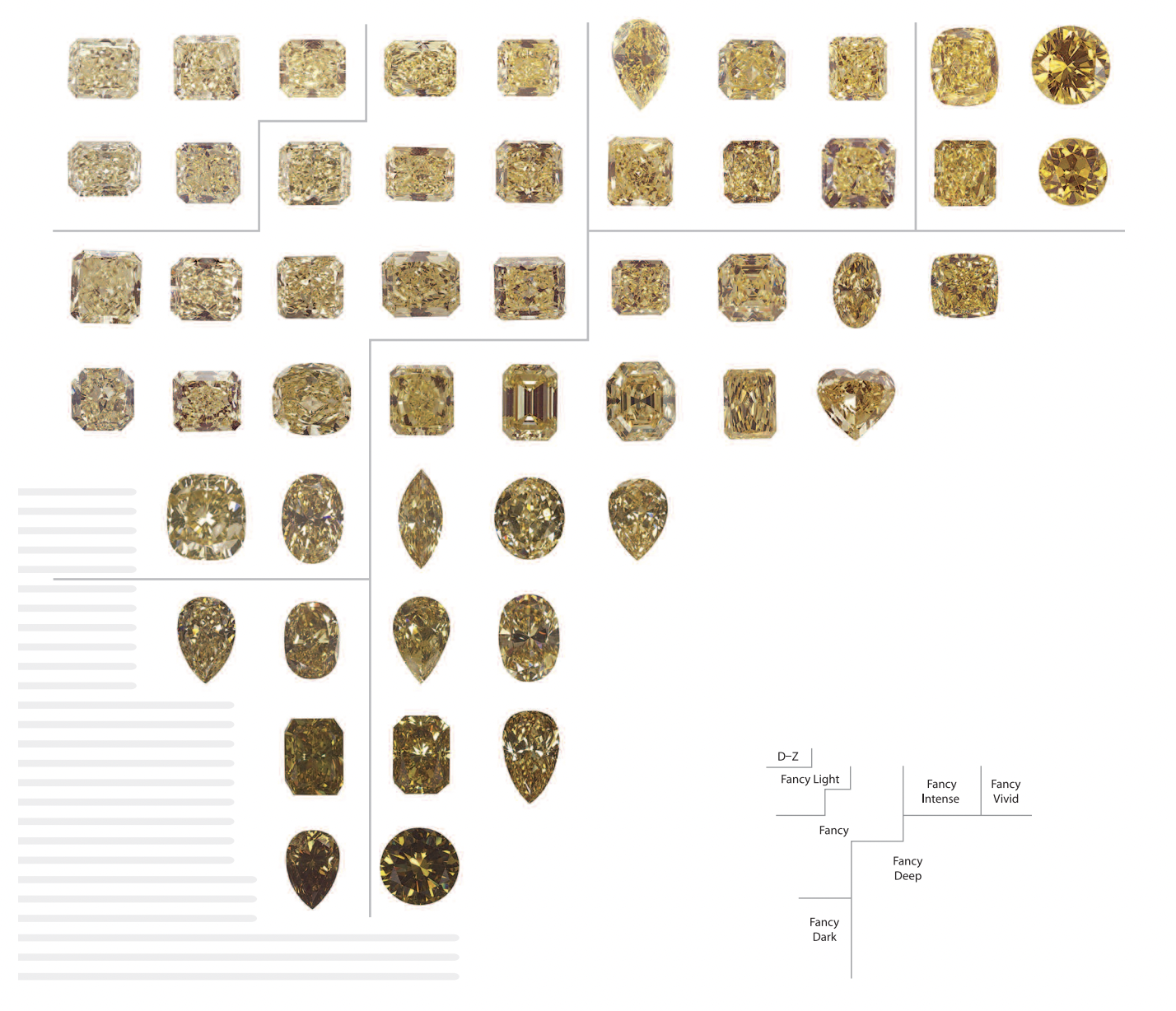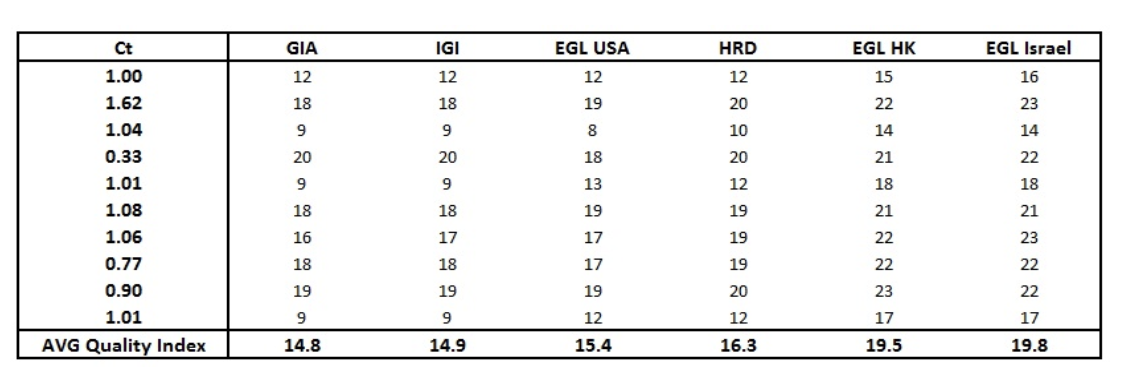
GIA vs IGI
Diamond Certification Explained
When it comes to assessing the quality and authenticity of gemstones and diamonds, independent gemological laboratories play a crucial role. Two of the most renowned and widely recognized laboratories in the industry are the Gemological Institute of America (GIA) and the International Gemological Institute (IGI). While both institutions offer grading and certification services, they have certain differences in their approaches and methodologies. This article aims to provide an unbiased scientific analysis of the differences between these two prominent diamond grading laboratories.
Both GIA and IGI offer diamond certification services, providing essential information regarding the characteristics and quality of a diamond.
1 4C’s Grading Policy
The 4C’s, which stand for Color, Clarity, Cut, and Carat weight, are fundamental criteria used to grade diamonds. Color refers to the presence of any tint in a diamond, with the highest quality stones being colorless. It is important to note however, that diamonds in fancy colors, such as blue or pink, are also precious and can be evaluated for quality. Clarity assesses the diamond’s internal characteristics or “inclusions” and external blemishes, with flawless diamonds being exceptionally rare. Cut evaluates the diamond’s craftsmanship and how well it reflects light, determining its brilliance and sparkle. Lastly, carat measures the weight of the diamond, with larger carat weights typically being more valuable. These four factors work together to determine a diamond’s overall grade and influence its desirability and price in the market.
Clarity
Both the International Gemological Institute (IGI) and the Gemological Institute of America (GIA) follow a comprehensive process to assess the clarity of a diamond. They use a 10x magnification loupe and follow standardized grading systems. During the assessment, they carefully examine the diamond for internal characteristics and external blemishes. They evaluate the number, size, position, nature, and visibility of these flaws. The IGI and GIA assign clarity grades based on a scale that ranges from Internally Flawless (IF) to Included (I). The graders at both institutions undergo rigorous training and adhere to strict guidelines to ensure consistency and accuracy in their evaluations.
GIA sample report
IGI sample report
In the section labeled ‘clarity characteristics’, is an example of how inclusions are reported in a diamond report. The layout is concise and easy to follow, and includes a key which tells you what each symbol means.
Colour Grading
Colour grading is a crucial aspect of diamond evaluation, as it impacts the visual appeal and value of a diamond. It is a widely accepted fact that less color equates to higher quality. Completely colorless diamonds are extremely rare, as most natural and lab-grown diamonds contain a slight yellow tint. Both GIA and IGI follow the same letter system to determine the level of tint present in colorless diamonds.
There are certain circumstances under which this color grading criteria matters less for colorless diamonds. For example, with cremation diamonds, there is typically a higher level of nitrogen present in the carbon source used to create the diamond. This can create a slightly more yellow tint. However, it is usually a very small difference and does not change the sentimental value or emotional significance of a diamond created from the ashes of a loved one.
For fancy colored diamonds, which are growing in popularity, the grading standard is even more complex. Both laboratories in question apply rigorous standards to determine the quality of these unique diamonds.
GIA employs a widely accepted and standardized color grading system that is highly regarded within the industry. GIA’s color guide uses specific terminology to provide detailed color descriptions. The terms used to describe color use a combination of saturation and tone, as well as where they exist in a specific region of “color space”.
Since GIA’s terminology is so specific, it is often difficult for diamond businesses to control the precise color of their diamonds, but most companies stay within the parameters of the GIA color guide.
On the other hand, IGI employs a similar grading system but is often perceived to be slightly more lenient in their color grading criteria. Consequently, GIA’s stricter color grading standards establish it as the preferred choice for consumers seeking precise color grading.
Black Diamonds
In terms of color, black diamonds are naturally opaque and exhibit a deep black or dark grey hue. Since their color is already saturated, the traditional color grading scale is not used for black diamonds. Clarity grading is also different for black diamonds, as their opaque nature makes it difficult to assess inclusions and blemishes in the same way as transparent diamonds. Although color and clarity grading do not apply for black diamonds, they can still be accurately assessed for cut and carat weight.
Cut
Both GIA and IGI offer certification on a wide variety of diamond cuts from brilliant to pear cut and just about everything in between. If you are looking to certify a fancy-cut diamond, either choice would suffice. If you have a raw uncut diamond that you would like certified however, GIA is the better option. Since GIA assesses raw diamonds and IGI does not, they have a slight advantage in this category.
2 Laser Inscription
An increasingly popular option for customizing your diamond is the process of laser inscription. It is now possible to inscribe a message, name, important date, or any words you choose onto your diamond. Although the inscription is not visible to the naked eye, a microscope can be used to view the meaningful inscription you opt to include on your diamond. While both GIA and IGI offer this service, including numbers, letters and special characters, IGI offers a heart shaped character, while GIA does not. Since IGI offers this special character, they are an excellent choice for more meaningful and heartfelt laser inscriptions.
3 Reputation
The Gemological Institute of America (GIA) was established in 1931 and is widely regarded as one of the most respected and trusted gemological laboratories worldwide. The GIA is known for its rigorous standards, scientific approach, and research-driven methodologies. Over the years, it has earned a stellar reputation for its consistency and impartiality. On the other hand, the International Gemological Institute (IGI) was founded in 1975 and has expanded its presence globally, with laboratories in multiple countries including the U.S., Canada, India, and the United Arab Emirates. While IGI is also recognized and respected in the industry, it is often considered to have more lenient standards compared to the GIA.
4 Precision
To determine which laboratory has fewer inconsistencies, a study was conducted by RapNet. This study involved sending ten diamonds, varying in clarity and carat weight, to several different diamond grading labs. The results of this study concluded that GIA and IGI were the most consistent in terms of grading clarity and carat weight, with GIA ranking only slightly higher. According to the study by RapNet, GIA was slightly more strict when it came to grading clarity, but not by much. GIA earned a quality index of 4.8, while IGI earned a 4.9 (with a smaller number equating to stricter grading). It is important to note, however, that this study had a very small sample size and may not be entirely reliable. Despite this, one can make a valid assumption that IGI is slightly more lenient in terms of grading.
The lower the score, the more strict the lab.
5 Format
Format is also something to consider when choosing your preferred diamond certification. When opting for IGI certification, you will receive a physical copy which is printed on high quality paper, including a protective sleeve. With GIA, you will only receive a digital copy. Here at EverDear, we will print the GIA certificate for you professionally. Both certificates provide aesthetic appeal as well as a plethora of facts and details. While both are valid options, IGI’s high-quality physical copy and variety of formats to choose from make them the winner for this category.
6 Lab-Grown Diamonds and Memorial Diamonds
Both IGI and GIA offer certification services for lab-grown diamonds. IGI specializes in grading lab-grown diamonds and has developed specific expertise in this area. GIA, with its broad experience in grading natural diamonds, has expanded its certification services to include lab-grown diamonds. Regarding memorial diamonds, which are created from the carbon extracted from cremated remains, both GIA and IGI can provide certification services for these specialized diamonds. However, if you want more information on what process was used to create the diamond, whether it be HPHT or CVD, GIA is the option that will provide you with this. It is worth noting that the 4C’s can be a good reference, but they are ultimately just a common standard designed to properly classify and appraise diamonds; they do not affect the personal meaning and treasured significance of a memorial diamond.
7 Price
The cost of diamonds is a significant consideration for consumers. On average, IGI-certified diamonds tend to be priced lower than their GIA-certified counterparts. This difference can be attributed to the variation in reputation and market demand associated with each certification. However, it is important to note that the price discrepancy between the two certifications can vary depending on the specific characteristics and market conditions of individual diamonds. Despite this, most of the time, IGI is the superior option in terms of price.
8 The Importance of Certification
Getting diamond certification is essential for protecting your purchase and ensuring its authenticity and value. When you buy a diamond, especially one of significant worth, having a certification guarantees that you are investing in a genuine and high-quality gemstone. The rigorous certification process provides an unbiased and accurate assessment of the diamond’s characteristics, enabling you to make an informed decision. With a certified diamond, you gain peace of mind, knowing that you have a valuable asset backed by professional expertise. Moreover, should you ever decide to sell or upgrade your diamond in the future, the certification will increase its marketability and ensure a fair transaction. Overall, diamond certification is vital for protecting your investment, establishing its worth, and maintaining transparency in the jewelry industry.
9 Conclusion
Category |
GIA |
IGI |
4C’s Grading |
✅ |
|
Laser Inscription |
✅ |
|
Reputation |
✅ |
|
Precision |
✅ |
|
Format |
✅ |
|
Lab-Grown Diamonds |
✅ |
✅ |
Price |
✅ |
Choosing between GIA and IGI certification ultimately depends on your specific needs, preferences, and budget. A comparative analysis of IGI and GIA reveals various differences in certification, price, color grading, reputation, and return policy. GIA’s certifications are considered more comprehensive and widely recognized, providing it an advantage in the certification category. IGI-certified diamonds tend to be priced lower, but this can vary depending on individual diamond characteristics and market conditions.
References
GIA color grading https://www.gia.edu/doc/ColDiaChartBklt.pdf
IGI laboratories https://www.igi.org/about-igi
GIA vs IGI strictness https://www.petragems.com/education/igi-vs-gia/
RapNet study https://www.diamonds.net/News/NewsItem.aspx?ArticleID=43417
Importance of diamond certification https://www.gemsociety.org/article/diamond-certification/






